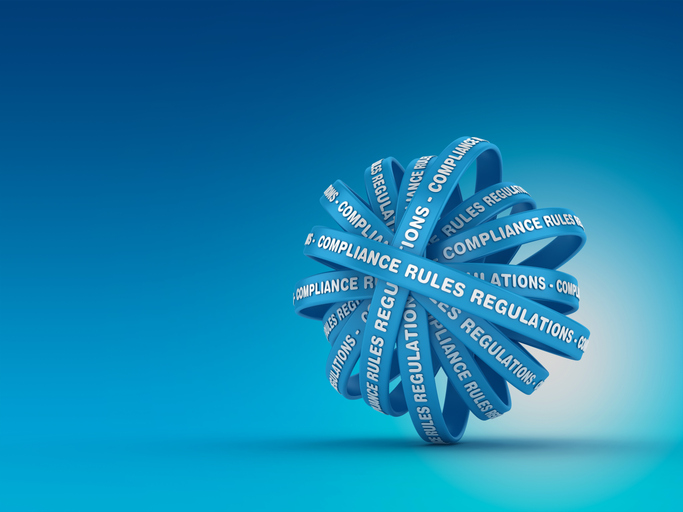What is Procurement Compliance?
Generally speaking, compliance means doing what you’re supposed to do.
So, what does it mean when we talk about procurement compliance?
Procurement compliance involves formulating, following and enforcing processes for company spend management—in simpler terms, it’s ensuring that all spend flows through company-approved policy and that activities like maverick spend aren’t occurring.
Procurement compliance often includes the percentage of spend procurement influences or the amount of spend on contract. Some organizations track how well they’re doing when it comes to using designated suppliers, or how those suppliers are performing.
Less likely, you’ll hear about on-time payments, how often the accounts payable department used the lowest-cost payment method, or how well your sourcing professionals are keeping in line with agreed-upon processes and guidelines.
Every company seems to have its own definition, and own focus areas for what procurement compliance is and how to address it.

How to Prioritize Your Procurement Compliance Initiatives
Start by realizing not all procurement compliance issues are created equal, and not for the obvious reasons.
Consider the difference between the percentage of spend on contract and how often you are paying on time.
It isn’t hard to see that percentage of spend on contract has a larger, albeit less immediate, impact on your bottom line. For this reason alone it may be at the top of your list.
How to Develop a Procurement Compliance Framework
So how do you develop, plan and implement a framework for compliance that works for your organization? Here are nine steps to get you started.
Word to the wise: Keep relevant stakeholders involved at every step of the process
1. Know Where You Currently Stand with Procurement Compliance
Are there specific areas of the business where you have compliance issues? Or are individual departments and teams are humming along just fine, but they don’t share information with each other?
2. Rank your Compliance Priorities
If you’re living off ad-hoc practices, there are probably glaring issues to address right off the bat. And if your C-Suite has decided to cut back, getting a handle on what everyone is buying becomes Job #1.
If you’re a little more advanced you might have solid contracts in place, but not everyone purchases against them.
Starting with the business case for your procurement compliance targets – the “so what?” – will help you recognize when you’re creating a process for the sake of process, and when you’re actually adding value.
3. Research Compliance Solutions
- Perhaps you need to develop value-driven processes where none have existed?
- Maybe you need better tools that align with your processes?
- Or is the issue that you need better training on the tools you already have?
Take the time to research all the ways you could address a given issue – not just the first one that comes to mind.
4. Understand Your Resources
Think broadly here. Take inventory of your financial resources, the abilities and skillsets of your team, intra-department dynamics and organizational culture. All of these will come into play as you work to optimize procurement compliance.
- Does your organization move quickly in the face of a strong business case?
- Are people generally open to trying new things?
- Are there certain departments that are easier to work with than others?
- Do you have direct control over any business areas?
Acknowledge any barriers or areas of smooth sailing upfront.
5. Map the Complexity
Go through each item on your list and map it according to impact and difficulty. The difficulty here can encompass anything that might hinder the project. Think things like budget, internal expertise, the need to get approval from multiple stakeholders, success being dependent on end-users outside of your control, or anything else you identified in #4.
6. Develop your list of “High-Value Targets”
At this point, it should be pretty easy to cross off anything that falls under “Low Impact, High Difficulty.” “High Impact, Low Difficulty” are usually the no-brainers. Tackle those first to gain momentum.
Often, getting the most fruit from your labors means focusing on those items with “High Impact, High Difficulty.” These items will usually require ongoing conversations across multiple stakeholders, extensive due diligence, and/or significant budget.
Look carefully at items with low budget impact. If there’s not a high dollar price tag, there’s usually still a massive change management effort that landed it up in the top right quadrant to begin with. Plan accordingly.
The “Low Impact, Low Difficulty” projects are usually afterthoughts. It’s unlikely you’ll tackle these.
7. Define what it means to be successful with procurement compliance
Now that you have the bones of an action plan, take some time to think through what procurement compliance success would look like. At one extreme, perhaps your goal is to make your accountants more efficient by requiring everyone to submit receipts to the same email address. Compliance success may be that they no longer walk into crumpled receipts on their desk.
At the other extreme, your goal may be to capture more value from the teams and tools you have in place by fully integrating their data and processes. In this case, you may have several goals – percent of spend on contract, preferred supplier usage, etc.
However, you define success, be sure it’s measurable.
8. Develop Timelines
Once you know what success looks like, map how long it will take to reach your procurement compliance goals. If we go back to our accountants and receipts example, a simple companywide announcement about the new process would probably do, so you can reasonably expect to see results within a few days.
For the more complex data and process integration example, your timeline would include things like implementation, training, and the time it will take to start seeing results.
9. Hold Yourself Accountable
Make sure you have processes or tools in place that provide visibility into how you’re tracking against your timelines and goals. If you haven’t already done so, performing a spend analysis will provide a baseline of what you’re spending, how much you’re spending, and who you’re spending it with. This can be a great place to start.
(Learn how to conduct a spend analysis in seven steps.)
When it comes to managing and tracking savings initiatives, our savings management software integrates project forecasting, initiative approval workflows and real-time savings tracking all in one solution.
If all goes well, the procurement compliance issues you’ve identified through this process shouldn’t stay issues for long. And since procurement compliance is an ongoing battle, soon enough you’ll be back, ready to start again at #1.
What’s the #1 Thing That Will Kill Procurement Compliance?
You identified a compliance problem within your procurement process. You came up with a plan. You created PowerPoints and ROI spreadsheets worthy of an award. Your boss loved it. Now all you have to do is get everyone else on board. With a plan that makes such obvious sense, it should be a piece of cake, right?
And then comes that one meeting. You know the one. When you walked in thinking everyone would give you a high five for making life SO MUCH BETTER? What happened instead? Unless you’re the CEO or some other head honcho in the room, you most likely got put in your place for assuming you knew how everyone functioned.
This is why the #1 thing that will kill your compliance effort every time is not involving stakeholders from the beginning.
Why the pushback? Let’s break it down.
Cumulative benefit doesn’t mean everyone does better
Let’s say your organization has a contract with a well-known office supply company to buy general office supplies. If everyone bought all of their office supplies off that contract, the organization would save $X per year. When viewed from this perspective, the cumulative compliance benefit is obvious.
But, let’s say you’re a sales rep who works remotely and needs to buy some extra binders once a year. Instead of purchasing them from wherever is convenient and submitting an expense, you’re now expected to remember the proper channels or take time out of your day to figure it out. If you feel like no one even considered, or cared, how life changes for you, you’re most likely going to push back.
Outside of procurement, end-user performance usually isn’t tied to compliance
Continuing the sales rep analogy, let’s say it’s the end of the year and time for your review. Over in procurement, management is looking at things like savings and spend on contract. But you? You’re being measured on whether or not you hit your quota. I’m pretty sure no sales rep ever has been told, “Great job hitting your quota! But let’s talk about these receipts you’ve submitted…”
People are unlikely to buy into compliance without personal benefit
If life doesn’t get easier, performance won’t be affected one way or the other, and if people already have a bad taste in their mouths because change was forced upon them, they’re unlikely to actually change. You haven’t given them a reason to.
How do you give them a reason to?
The lynchpin is to get key stakeholders in the room from the beginning.
Does that mean every sales rep (or otherwise end-user)? Of course not. But everyone who is affected by the change should have a representative that can speak to their particular concerns.
Doing so not only means that you’ll come up with a better solution that makes life easier for the majority, but – assuming you genuinely considered their input and communicated your reasoning (this last part is key) – those representatives will also feel ownership over getting their people on board.
The result? People who want to help you versus you trying to force it. Sounds pretty good to me.
How to Successfully Roll Out Procurement Compliance Software
Establishing compliance in your procurement efforts isn’t easy. Team resources are stretched, regulations change frequently, and new leadership might shift priorities even further. Depending on your industry, you may face significant industry or governmental regulation.
To top it all off, many organizations lack actionable or accurate data. So how can you unify your processes and increase compliance in your organization?
Rolling out new technology can be the perfect opportunity to establish new compliance standards across your organization, and really bring your team together to rally around this common goal. As you shift organizational processes to a new solution, it’s important to take the opportunity to improve compliance, too.
So, here’s five key steps that every CPO should be putting into practice in a new tool rollout in order to improve compliance across the organization.
1. Define Procurement Compliance
At its most basic, compliance just means that you’re following the rules. What those rules are can vary greatly depending on where you are in the world, how large your organization is, and what industry you operate in. For example, an organization operating in the public sector might have more requirements to comply with.
More than that, though, procurement compliance specifically can often mean reaching a certain level of on-contract spend, tier-one supplier spend, or supplier performance. Dynamic discounts or early payment bonuses could be on your compliance list, too. Ultimately, it’s on your organization to define what’s important to you (and, of course, what’s required of you by third-party groups).
At this point, you don’t have to get into the weeds with specific measures but identify the critical points you want to measure and improve on.
2. Set a Baseline
Once you’ve defined what your compliance priorities are, it’s important to take an honest look at where your organization is starting from. Start by considering business-critical or legally required compliance items. These are the items that impact your ability to do business at all. Are there government requirements that you’re failing to meet? Are you making necessary payments on time to your suppliers?
Once you have the critical items set, take the opportunity to measure your other compliance metrics. Don’t forget, it’s equally important to look at supplier contracts to ensure suppliers are meeting compliance standards and performance metrics. It’s going to be a challenge to make significant progress if your suppliers aren’t matching up to your standards, so supplier management will be a major part of your benchmarking.
3. Clearly Define your Success Metrics
Identifying where you stand today is fine, because it helps you build a path to the future. The next step is one that’s essential in any business project – defining success. What are your measurable, defined goals that you want to achieve as you improve your compliance?
To start, identify specific regulations, directives and guidelines that you know apply to your business. Decide on a concrete improvement metric. For example, maybe you’re currently making 90% of payments on time. Set a goal to improve that – maybe 95% or 98%.
It’s also crucial to set reporting schedules for industry or government regulators, internal stakeholders, investors, and anyone else with a vested interest in your performance. Commit to a regular cadence – quarterly, twice yearly, or whatever works for your business – and put together a clear plan to achieve that.
Some goals, like organizational transparency, risk mitigation, or supplier relationships might be less quantifiable at first glance. Work to set metrics for these that will give an accurate impression of performance. For example, you might set goals for the number of supplier support calls, on-time delivery, or security incidents. Use these as more quantifiable proxies for your overarching goals to better measure progress.
4. Choose your Solution
Ideally, tool selection will be an obvious step in the process. While choosing the right provider is a much larger topic, you should be factoring in compliance requirements throughout the selection process.
Various procurement solutions will always tout certain levels of compliance, whether that means compliance tracking and auditing, advisory teams to guide you along the way, or automated compliance measures built directly into the platform. It’s important to be aware of the differences here and to know what level of solution support you need. Do you already have an expert in-house who can keep tabs on compliance, or do you need a little bit more guidance? Is there something more strategic that person could be doing? If so, you could probably benefit from an increased level of automation, especially when it comes to complicated, highly regulated areas like global eInvoicing or contract management.
5. Develop Timelines
Of course, any good project management approach requires deadlines. Without them, nothing can be prioritized and nothing is ever finished. But these deadlines shouldn’t just be tied to the tool implementation itself. While that might be the focus of the project from a tactical perspective, you should set independent timelines for the compliance improvements you previously mapped out.
One key point is to make sure that these deadlines are realistic. Pushing for unreachable timelines can cause your team to miss their goals and get discouraged, dooming the project to failure. Consider using a common project management framework like SMART – specific, measurable, achievable, relevant, and time-based.
Naturally, once you set these deadlines, stick to them. Find ways to incentivize your team to meet their deadlines. A clear project plan independently of the implementation efforts can work wonders.
Decide What’s Best for You
Ultimately, every organization will have different compliance needs and different bandwidth to meet them. These steps are only meant to serve as guidelines as you push your team toward more complete compliance. Decide what your most urgent needs are and place focus there. But don’t underestimate the implementation process as an opportunity to set a new standard for procurement as a whole. JAGGAER is here to help at every stage of the procurement process. If you’d like to speak to an expert about getting started, contact us today.







